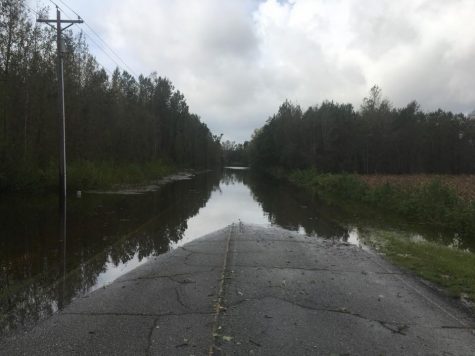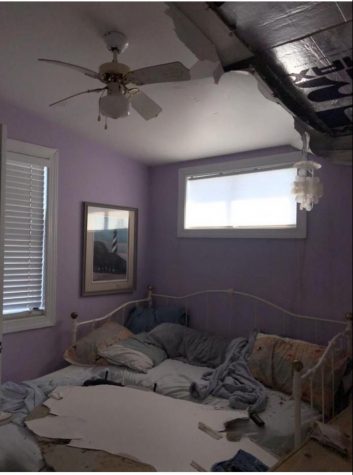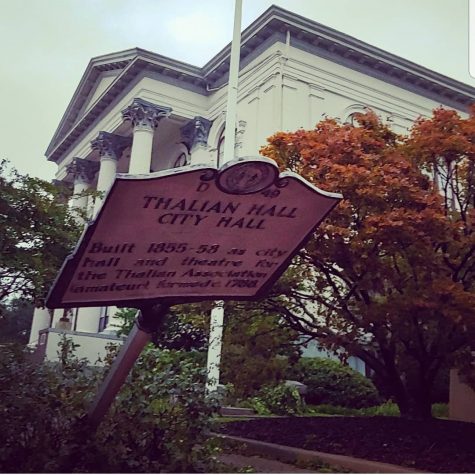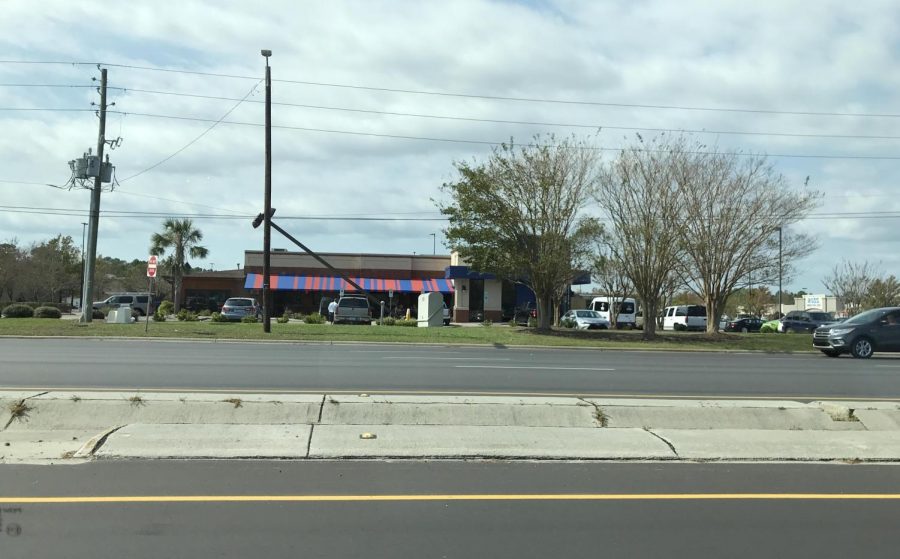Hurricane Florence: What’s next?
As the old adage goes, “when it rains it pours,” and pour Hurricane Florence did as days of torrential rain flooded much of the Carolina coast from Sept. 13 through Sept. 17.
Monday, Sept. 10 in Wilmington, N.C. seemed like any other day; the late summer air was humid and hot and the sun was shining brightly in the sky. Despite these typical conditions, the concerns held by UNCW students and the general public of the Wilmington area were anything but ordinary.
Word that Hurricane Florence, a storm that at its height was a Category 4 in in the Atlantic Ocean, was barreling towards the Eastern seaboard of the United States with Wilmington directly in its path.
In preparation for the arrival of Florence, UNCW made the decision to first issue a voluntary evacuation and then a mandatory evacuation of the campus on Sept. 10.
In the days to come many of Wilmington’s residents, as well as individuals in surrounding cities, made the choice to evacuate from an area that would be hit with a storm that was frequently stressed to be “extremely dangerous” by local and state officials.
In the end, freshwater flooding was the most devastating aspect of Hurricane Florence in the Carolinas. In addition to fallen trees and power lines, areas in the path of the Cape Verde hurricane were forced to contend with unprecedented amounts of rain as the storm stalled over land.

The scene at Zion Church Road at Town Creek Road in Brunswick County, where many roads throughout the area were washed out due to rains caused by Hurricane Florence.
In some of the hardest hit areas such as New Bern, N.C. rain totals reached up to 35.93 inches according to the National Weather Service.
The devastation of Hurricane Florence was massive with Wilmington alone estimating that the damages will cost 220 million dollars, according to The Star News.
The UNCW community felt the impact of the storm heavily with the university reporting that over 100 students and some professors lost their homes, and university damages totaling an estimated 145 million dollars according to WECT.
What is next for UNCW and the Wilmington community?
“What’s next?” is a question being faced by many in the Wilmington community as countless individuals face severe damage to their homes. For senior Serena Craven the question of what to do next is all too relevant.
“After the storm, we got the news that our roof had been compromised and caved in and that one of the rooms was really bad”, explains Craven in an interview with The Seahawk.
“My friend Carter’s room was completely ruined, and all her clothing was wet and moldy. Erin’s room was also messed up and the ceiling was on her bed. We were told we weren’t going to be able to live there anymore” continued Craven.

Many students, faculty, and Wilmington community members like Craven are now facing displacement as their previous residences have become unlivable.
Repairs and restoration to campus began shortly after the storm ebbed and damages could be assessed. Damage and repairs to residential homes are also underway and the community is now focused on grasping the full scope of the damage that will need to be addressed in the Wilmington area.
While UNCW focusing on repairs and rebuilding campus, the faculty is faced with the monumental task of making up for the loss of 19 academic days.
In an email to the student body, Chancellor Jose Sartarelli said that the faculty was faced with “trying to make up an unprecedented loss of instructional time.”
Solutions proposed to alleviate some of the missed class time include extending some class times, canceling fall break, and canceling reading day.
City and countywide damage totals are still being assessed, but emergency aid money will be available to New Hanover and surrounding counties through the Federal Emergency Management Agency (FEMA).
So to the question “what comes next” the answer is not quite as simple as “rebuilding”. Yes, like the trending slogan, we will rebuild. However, before rebuilding must come a period of damage assessment and planning. Wilmington and UNCW are still focused on immediate damage control and assessment of losses.
The long-term rebuilding will be seen in the weeks, months, and even years to come as the full damage inflicted by Hurricane Florence is realized.

The historical marker outside Thalian Hall in downtown Wilmington was knocked over due to winds from Hurricane Florence.








